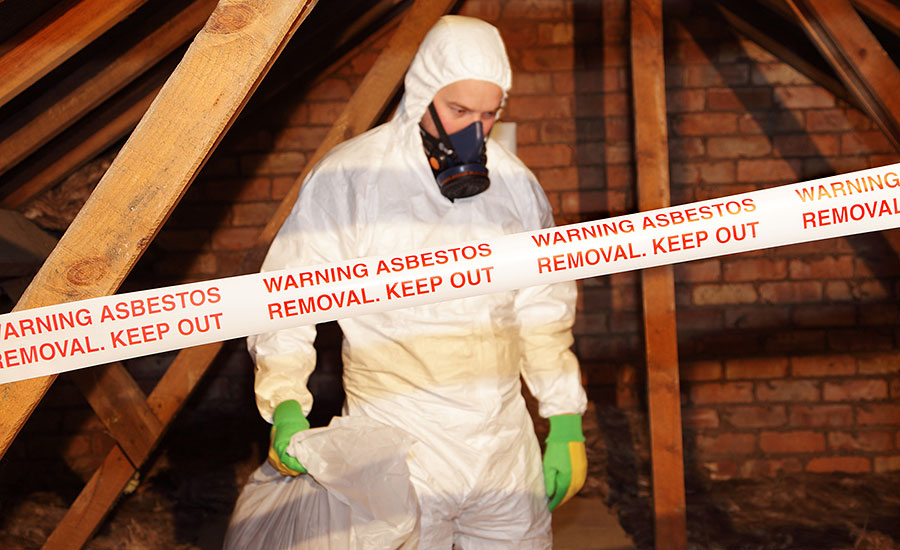Your Guide to Effective Asbestos Examining Procedures
Asbestos screening procedures are a crucial element of guaranteeing the security of interior environments, specifically in older structures where this hazardous product might be existing. The possible wellness dangers linked with asbestos exposure make it imperative to come close to testing with accuracy and thoroughness.
Comprehending Asbestos and Its Risks
Asbestos, a naturally happening mineral understood for its warmth resistance and longevity, postures serious health dangers when its fibers are breathed in or consumed. asbestos testing service. Exposure to asbestos can cause serious wellness conditions such as lung cancer, asbestosis, and mesothelioma cancer. In spite of its useful buildings, asbestos has actually been commonly banned in several nations due to the tested link between asbestos exposure and these serious illness
The threat lies in the tiny fibers that can easily become airborne when asbestos-containing products are disrupted or harmed. When breathed in, these fibers can become lodged in the lungs, causing swelling and scarring with time. The latency period between direct exposure to asbestos and the development of relevant conditions can span several years, making early discovery and prevention vital.
Asbestos was generally utilized in building and construction materials, insulation, and auto components before its health and wellness dangers were completely understood. Today, proper testing and elimination of asbestos-containing materials are important to safeguard individuals from the threats related to asbestos exposure.
Identifying Prospective Asbestos Materials
The recognition of possible asbestos materials is a crucial step in guaranteeing the safety and security of people revealed to unsafe substances in numerous settings. Asbestos can be located in a broad array of structure materials, including but not restricted to insulation, ceiling ceramic tiles, flooring tiles, cement sheets, and roofing tiles - asbestos inspection. Identifying these materials precisely is important to successfully taking care of the threats linked with asbestos direct exposure

In situations where aesthetic inspection is inconclusive, samples of thought products can be accumulated and sent out to recognized research laboratories for screening. These laboratories use specialized techniques such as polarized light microscopy or transmission electron microscopy to precisely figure out the presence of asbestos fibers in the samples. By following strenuous recognition treatments, individuals can successfully minimize the threats connected with asbestos direct exposure.
Choosing the Right Screening Approach
Recognition of possible asbestos products plays a critical role in determining the appropriate testing method for exact asbestos fiber discovery. Once presumed materials have actually been identified, selecting the right screening approach is crucial to make sure dependable outcomes. There are two key techniques for asbestos screening: polarized light microscopy (PLM) and transmission electron microscopy (TEM) PLM is generally utilized for first screening as it is affordable and gives fast outcomes. PLM has limitations in identifying asbestos fibers that are smaller than 1 to 3 microns. On the various other hand, TEM is an advanced strategy that can precisely determine asbestos fibers at the ultrastructural degree. While TEM is a lot more lengthy and pricey than PLM, it offers greater level of sensitivity and specificity in asbestos detection. Choosing the appropriate screening approach depends on numerous elements such as the kind of material being checked, the required sensitivity of the analysis, and the offered spending plan. It is important to consult with recognized asbestos testing specialists to determine the most appropriate technique for your certain testing demands.
Performing Sample Collection Safely
When collecting samples for asbestos screening, prioritizing safety and security actions is paramount to after asbestos removal reduce possible direct exposure risks. Asbestos see here fibers are hazardous when disturbed, making it crucial to follow appropriate safety procedures during example collection - asbestos inspection. Prior to starting the sampling procedure, make certain that you are outfitted with personal protective equipment (PPE) such as disposable coveralls, gloves, masks, and safety glasses to avoid inhalation or contact with asbestos fibers
It is necessary to wet the tasting location using a gentle mist of water to avoid the fibers from becoming airborne during collection. Usage care when accumulating samples and prevent hostile scratching or piercing that could launch asbestos fibers right into the air. Rather, carefully cut a tiny item of the material using ideal devices and place it right into a sealed container for evaluation by a qualified research laboratory.
Moreover, classifying each example with comprehensive details relating to the sampling area, date, and collector's name is essential for precise record-keeping and analysis. By following these safety and security guidelines, you can carry out example collection for asbestos testing properly while lessening the danger of direct exposure.
Interpreting Examination Results and Following Actions

Conclusion
Finally, efficient asbestos screening procedures are crucial in determining and handling possible health risks additional resources related to asbestos direct exposure. By understanding the dangers of asbestos, identifying potential materials, selecting the appropriate screening method, performing example collection securely, and analyzing test results precisely, organizations and people can take the necessary actions to secure themselves and others from the unsafe impacts of asbestos. It is critical to focus on safety and security and appropriate testing procedures to ensure a healthy setting for all.

Recognition of prospective asbestos materials plays a vital duty in determining the proper screening technique for accurate asbestos fiber detection. The test results will indicate the presence or absence of asbestos, the type of asbestos fibers present, and the concentration levels.In conclusion, reliable asbestos screening procedures are necessary in identifying and managing possible health and wellness dangers connected with asbestos direct exposure. By recognizing the threats of asbestos, recognizing potential products, picking the ideal screening method, carrying out sample collection securely, and translating examination results accurately, organizations and people can take the needed steps to safeguard themselves and others from the unsafe impacts of asbestos.